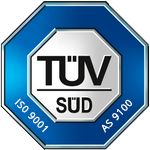CHMS
Our specialization
CONFIGURATION AND HEALTH MONITORING SUBSYSTEM (CHMS – PA)
1. INTRODUCTION
Configuration and Health Monitoring Subsystem for Power Amplifier (CHMS-PA), (Model: RA-ECIL-CHMS-311) does the function of configuring, status and health monitoring and controlling High Power V/UHF Power Amplifier based on inputs from front panel keypad, status inputs from RF sections. CHMS also has associated Preamplifier circuits (Pre Amp), Digitally Controlled Attenuator (DCA), Voltage Controlled Attenuator (VCA), ALC Circuits (for inputs from PA and FSU). VSWR comparators are built in the CHMS. CHMS displays present configuration and status of PA and FSU.CHMS operates on +28V, +15V, -15V and +5V fed externally from the system.
2. FEATURES:
Salient features of the unit are
- Detecting FWD and REFL powers from PA and FSU.
- Low Noise Amplification in Pre-Amplifier.
- RF Front End circuits consisting of BPF, SP2T, DCA, Equalizer, VGA.
- Power Level selection.
- UC for Interface and Control with Key Pad and LCD display.
3. FUNCTIONAL BLOCKS
The following functional blocks are incorporated in the CHMS subsystem for realization of intended functions.
- PA Gate Bias Control circuit giving one output.
- Current sense resistors, Amplifiers and Analog voltage output for 24 Channels.
- Detectors for Forward power, Reflected power detectors from PA and FSU, VSWR comparators, status lines as outputs.
- Power Level selection circuits based on front panel selection, to generate control lines for Digitally Controlled Attenuator.
- UALC circuits for PA with analog output for VGA control.
- RF Front-end circuits consisting of band pass filter, SP2T, DCA, Equalizer and VGA.
- A preamplifier with low noise figure.
- Keypad with configuration and description.
- LCD display.
- UMicrocontroller with interface for keypad, display, status lines from PA/ FSU and control lines to PA/PSU.
4. MODULES OF CHMS
The CHMS is configured in following modules.
- RF Front End module.
- Signal Conditioner Module.
- RF Detector Module.
- Control Module.
- Keypad.
- LCD display.
5. INPUTS TO CHMS
Following are inputs to CHMS subsystem.
- +28V, +15V, +5V, -15V, Ground.
- Noise Quietening.
- Supply line and common ground for 22 Amplifier blocks.
- FWD PWR from PA.
- REFL PWR from PA.
- FWD PWR from FSU.
- REFL PWR from FSU.
- Thermal element.
- Keypad (3 rows and 5 columns).
- Display (4 rows, 20 characters).
6. OUTPUTS FROM CHMS
Following are outputs of CHMS subsystem.
- Gate Bias control.
- 28V DC after current sense for 22 PA stages.
- FSU Switch selection lines.
- VSWR_PA status to LED- to front panel.
- VSWR_FSU status to LED –to front panel.
7. TEST JIG FOR CHMS-PA AND APPLICATION SOFTWARE
- Test Jig simulates various inputs CHMS and monitors outputs of CHMS.
- Test Jig is built around a microcontroller with RS232 interface.
- Test Jig simulates all analog and digital inputs to CHMS. Monitors and Displays status and outputs of CHMS in the form of LEDs and LCD display.
- Programming of CHMS for references, thresholds setting and lookup data, if any, is done by user with the help of this jig.
- Test Jig comes with application software, which can be loaded in to a PC. Hence this jig is a standalone unit.
I. CONTROL MODULE
Control Card configures and controls the RF modules of PA and also assists in monitoring various status conditions of the PA system.
Control functions are divided in to two parts.
MASTER CONTROLLER
Master controller does the functions of:
- Handling controls from systems and configuring the RF modules is implemented in Master Controller.
- Key Scanning and detecting and taking necessary actions.
- Handling RS232 interrupt from PC for PA RESET.
- Saving Reference values through external memory interface.
SLAVE CONTROLLER
Slave controller does the functions of:
- HMonitoring the 22 current sensing lines (by reading the analog signals), decision making on fault condition and enabling Noise Quietening signal.
- Configuring the Front End Module for DCA attenuation value.
- HReading VSWR status of PA and FSU from respective RF Detector Module.
- Reading Vf and Vr analog voltages from PA and FSU from respective RF Detector Modules and display corresponding forward and reflected power levels.
- Controlling the LCD and display of status of PA and FSU
II. FRONT END MODULE
DESCRIPTION:
RF input, in the frequency range of 20-500 MHz, is fed to Limiter (U6) for protecting RF stages from large/ strong signals. This level limited signal is fed to a SP2T switch (U2) to route r.f signal to further R.F stages or to terminate in load. The control to this switch is received from control card based on the status of the power amplifier modules namely, Thermal status of PA and current drawn by amplifier stages; load VSWR in normal operating condition. RF signal from SP2T is fed to a Digitally Controlled Attenuator (U3). Six buffered control lines to control attenuation of DCA (0 to 31dB in 0.5 db step are fed from control card based on power control command from system. Thus attenuated rf signal is fed to a VGA (U7) for ALC (Automatic Level Control) function. Reference for ALC, which is proportional to the power level required, is fed as input from system. Thus processed RF signal is fed to PA for further amplification.
III. RF DETECTOR MODULE
DESCRIPTION:
Forward and Reflected signals from PA are fed to (U2, U1) and (U8, U7) respectively. The detected voltages are buffered (U6 and U4) and are fed to controller for further processing. The reflected voltage is compared to a fraction of forward voltage and the comparator (U5) output triggers a latch (U3). The latch output is fed to controller as VSWR status of PA via buffer (U9). Also, this status line is converted to RS422 format (U11) and is made available to system.Similarly forward and reflected signals from FSU are processed in second RF Detector module to present VSWR status, as seen by FSU, to controller and in RS422 format to system.
